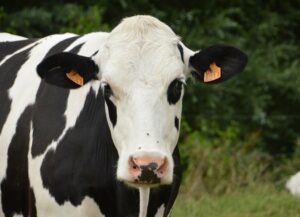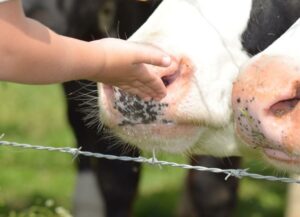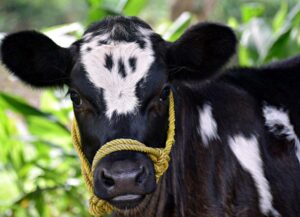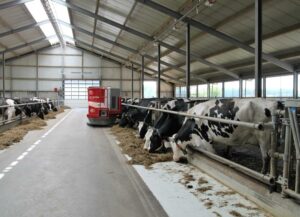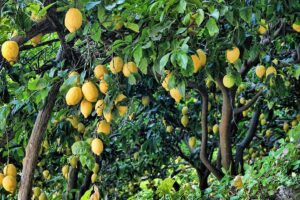Lucas Pantaleon
Infectious bovine rhinotracheitis (IBR) is caused by the bovine herpes virus 1 (BoHV-1). BoHV-1 along with bovine viral diarrhea virus, are important diseases in dairy herds because of the negative reproductive effects, increased susceptibility to other illnesses, early culling, and significant economic losses.
Dairy cattle infected with BoHV-1 can develop acute infections (AcI) and shed virus for short periods of time. This stage is followed by lifelong latent infection (LI), characterized by viral re-excretion secondary to stress events. Movement of animal between herds is the principal route of disease contagion.
In the literature, there has been a lack of focus on the development of risk assessment models to evaluate the effect of biosecurity measures in the probability of disease introduction to support decision-making regarding what practices need to be prioritized based on farm-specific risks. It is important to keep in mind that biosecurity programs should be adaptable and tailored to the situation of each farm. Therefore, quantitative risk assessments can be useful to identify and justify changes in biosecurity based on the probability of disease introduction.
A recent study (Benavides et al., 2020) reported a quantitative risk assessment model to identify farm-specific biosecurity measures that need to be implemented in order to reduce the annual probability of introducing BoHV-1 in dairy cattle herds.
To create the model, investigators gathered data from multiple sources. Information was obtained from official animal movements, biosecurity questionnaires, scientific literature, and field veterinarian’s expert opinion. A structured questionnaire was used to collect data on biosecurity measures on 127 Spanish dairy farms. The questionnaire was structured into 4 parts: general farm data, animal movements, vehicles, visitors, and staff.
Veterinarians involved with the health management of the studied herds participated in the development of the model. Based on the group’s discussions, variables included in the model were the purchase or introduction of cattle, offsite rearing of replacement heifers, showing cattle at competitions, sharing transport vehicles, and transporting animals in trailers that were not cleaned and disinfected. Also sharing a trailer with AcI animals could lead to infection of susceptible cattle.
The study revealed that cattle movements were mostly done by contractors and farms commonly shared trailers for transporting cattle. Only half of the farms owned their transport trailer and cleaned and disinfected their trailers. Testing animals at origin for BoHV-1, having quarantine facilities for new arrivals, and testing new arrivals were not common in the participating farms.
The study found that the annual probability of BoHV-1 introduction via infected animals differed between farms. The median likelihood for introducing the virus into a herd was 9%. Dairies that purchase cattle locally and shared transport trailers had the highest probability of introduction. The results highlight the need for improvement in biosecurity measures in the study herds.
A useful tool to support decision making
The model developed in this study could be a useful tool to support decision making on biosecurity measures that need to be prioritized in order to decrease viral introduction to the heard. Quantitative risk assessment models can estimate the probability of viral introduction into a population. These models take into account factors that influence the likelihood of disease transmission, such as environmental persistence of the virus, viral load shed by affected animals, frequency of contacts, biosecurity measures, among other factors that could modify the probability of transmission for a given contact.
A disadvantage with the use of these types of models in practice is their complexity, ultimately limiting their usefulness to improve biosecurity in practice. By involving the field veterinarians in the development of the model, researchers in this study aimed at improving the adoption of the model.
A key learning point is that for successful implementation of this model for improving biosecurity stakeholder’s involvement and feedback are vital.
Reference
B. Benavides, J. Casal, J. F. Diéguez, E. Yus, S. J. Moya, R. Armengol, and A. Allepuz. Development of a quantitative risk assessment of bovine viral diarrhea virus and bovine herpesvirus-1 introduction in dairy cattle herds to improve biosecurity. 2020. J. Dairy Sci. 103:6454–6472.
© 2020 Dairy Knowledge Center. All Rights Reserved.



